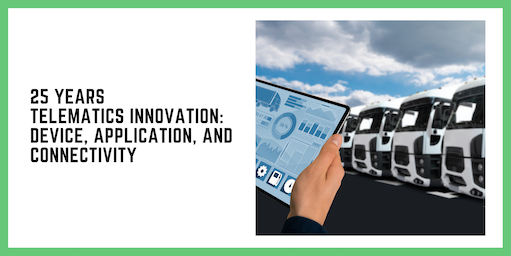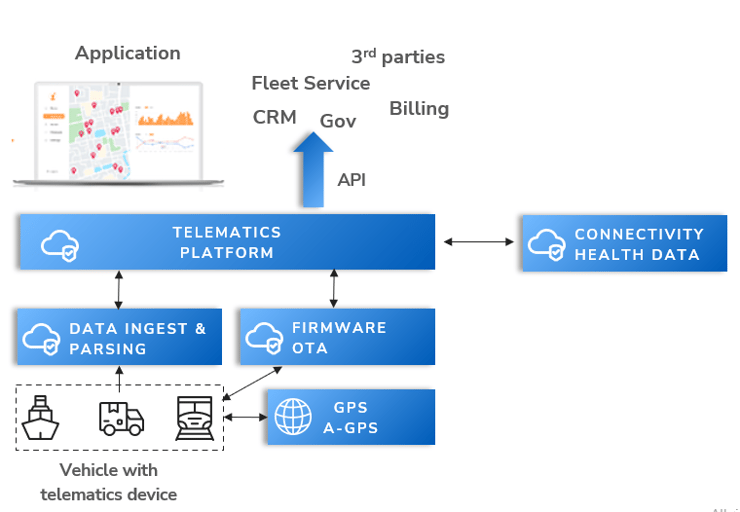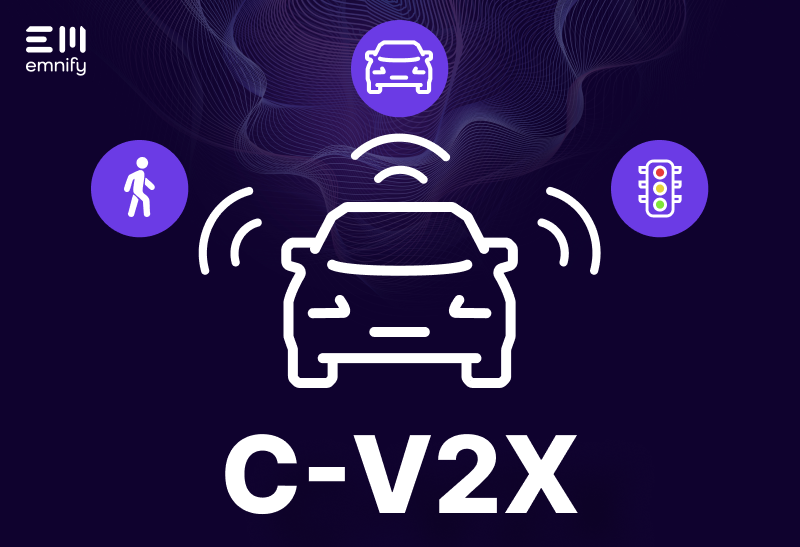

The telematics industry originated 25 years ago, and has tremendously evolved ever since. In this article, we discuss five topics that are required, to be successful in the telematics industry.
In June 1996, US President Clinton signed a directive to make GPS available for commercial and public use which ignited the telematics industry. Since then, there has been an advancement in device, platform, and connectivity technologies to better cater to telematics use cases.
We will discuss how technology has evolved and which practices are state-of-the-art for building a telematics solution in terms of:
In the beginning, telematics gained interest among fleet managers to track vehicle locations and for logistic purposes. Now location information is only a base ingredient. With the advancement of new use cases, a telematics solution not only measures vehicle, driver, and environmental conditions but also serves to remotely control the vehicle.
With the processing of the collected data using AI, new use cases have been developed that not only address the needs of fleet management but also insurance, cold chain monitoring, and car-sharing..png?width=1024&name=Design%20ohne%20Titel%20(1).png)
Transformation to telematics device hubs
With the evolution of use cases, telematics devices have developed from a pure location-sending device to a data collection hub in the vehicle. Getting on-board diagnostic information over OBDII or CAN bus has become a standard functionality, retrieving rich information such as vehicle identification, acceleration, fuel consumption, emissions, service indications, and errors. Further telematics solutions can be adapted to their use case with additional hardware such as:
- Temperature, humidity, and movement sensors from the cargo or reefer
- Dash-cams to monitor driver’s fatigue and capture incident video footage
- Panic buttons for alerting
- Driver identification devices for car control
While GPS trackers have been utilizing 2G and later 3G to transport this data, with the sunset of these technologies, it is important to utilize future-proof M2M and IoT-focused communication technologies like LTE CAT-1 and LTE-M.
Managed cloud-based telematics platform
Over the twenty-five years of GPS, several telematics platforms have appeared in the market. These platforms ingest and display data from telematics devices. As such, the easiest and fastest way to build a telematics solution is to integrate a quality device, a managed platform, and a connectivity partner. That said, for some use cases and go-to-market strategies, this might not be a viable solution – due to the lack of customization or a matching business model.
When selecting or building a telematics application, there are several best practices to ensure that the platform is highly available, can be operated efficiently, and extended with future technology:
- Utilizing a middleware platform that ingests and transforms the data in a unified way and then delivers the data via API – making sure new devices can be easily integrated
- Utilizing a globally distributed cloud platform and managed cloud services provides higher availability, relieves R&D with managing IT infrastructure, and provides lower latency while keeping the data local
- Integration of a device management platform to allow for secure over-the-air updates of the device firmware
- For use cases that need better accuracy than 3m – the integration of assisted-GPS (A-GPS) data that provides 3-6cm accuracy
Key telematics application features
With the advances in use cases, telematics applications are continuously evolving with new functionality. While the customizable display, location analysis, and sensor data remain central, telematics solutions also need to address customer needs in terms of efficient operations and integrations such as:
- Public available APIs and pre-integrations of telematics data into fleet management, CRM, ERP, maintenance systems
- Integration of operational relevant data to show the health of the devices and system, e.g., from device management and connectivity provider
- Push alerts and notification for fast incident detection
- Inclusion of video telematics and drive behavior analysis
- Optimization calculations for routes and maintenance intervals
- Driver feedback
Connectivity provider evolution
In the early years of GPS solutions, data was not sent to a central location and there was hardware installed in the vehicle to capture the data locally. Only with the use of cellular networks for data transport to a remote location, telematics for real-time fleet management has been enabled. Today, cellular connectivity is one of the key availability and operational factors for a telematics solution.
In the early 2000s, traditional operators were deploying and monetizing 3G and 4G for consumer devices and smartphones, often not catering to telematics solutions that only needed limited data, coverage in rural areas, and operated across borders. In the 2010s, new virtual network operators began focusing on IoT. They bought large volumes of data from an operator and sold them with low-data IoT tailored price models, frequently allowing access to multiple networks in a roaming scenario.
Only in the Mid 2010s, cellular providers with a communication platform for IoT arise that not only had the right commercial model for telematics – but also opened the telecommunication world for telematics providers. Those platforms provide an additional layer of transparency, control, and security – no matter where the device is located. With automatic operator switching, easy network troubleshooting in case of failures, global integrations into telematics platform, and automatic device provisioning via SMS, telematics solution providers can be more efficient in operations.
Summary
The telematics industry is changing – even after 25 years, there are new technologies that enable more use cases. At the same time, intense competition has led to price decrease, and solution providers need to find differentiation in the market and drive down operational costs. Handling thousands of devices demands platforms that are adaptable and easy to integrate, so business processes can be automated across the components.
Get in touch with our IoT experts
Discover how emnify can help you grow your business and talk to one of our IoT consultants today!

If you want to understand how emnify customers are using the platform Christian has the insights. With a clear vision to build the most reliable and secure cellular network that can be controlled by IoT businesses Christian is leading the emnify product network team.

.jpg)

